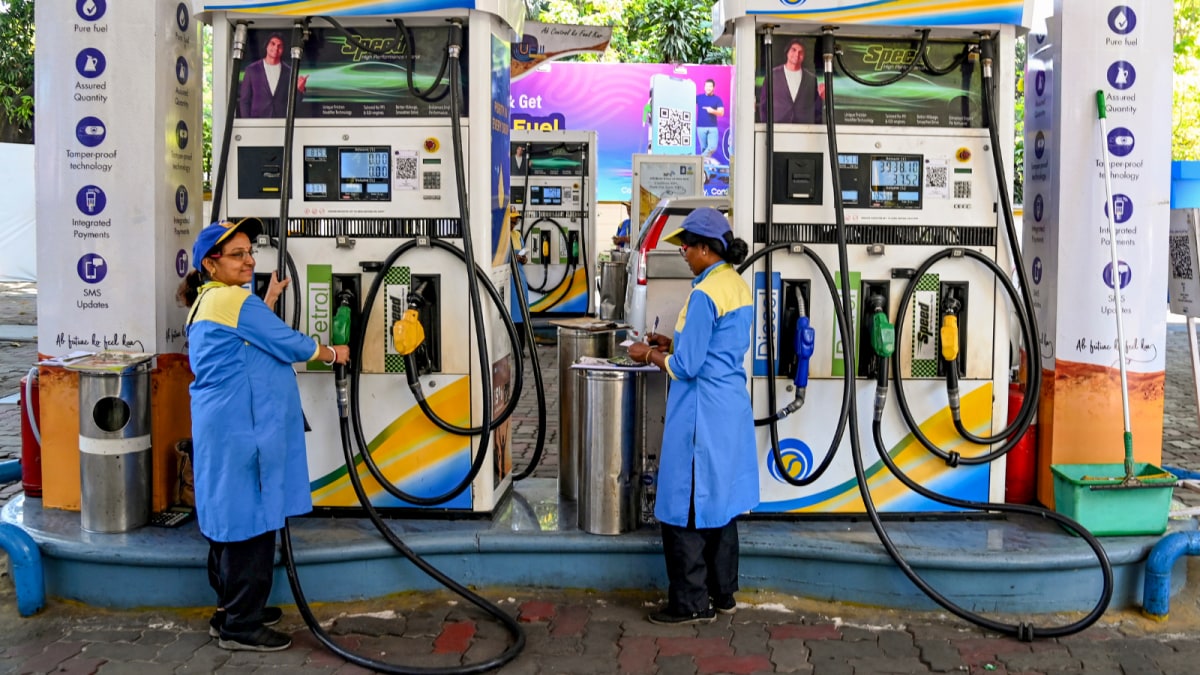Business
Relief for consumers as govt slashes petrol by Rs5.66 per litre | The Express Tribune
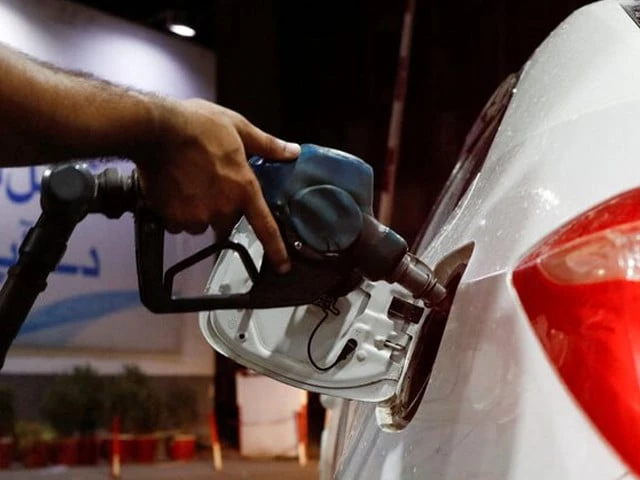
The federal government has announced a reduction in prices of petroleum products by up to Rs5.66 per litre for the next 15 days, with the new rates taking effect from October 16.
According to a notification issued by the Ministry of Finance on Wednesday, the price of petrol has been cut by Rs5.66 per litre, bringing it down from Rs268.68 to Rs263.02 per litre. The price of high-speed diesel (HSD) has been reduced by Rs1.39 per litre, from Rs276.81 to Rs275.41 per litre.
The Government has adjusted the prices of petroleum products for the fortnight starting tomorrow (October 16, 2025), based on the recommendations of the Oil and Gas Regulatory Authority (OGRA) and the relevant Ministries.
The new prices (in Rs. per litre) are as shared below pic.twitter.com/PPiSGjiJ3m
— Ministry of Finance, Government of Pakistan (@Financegovpk) October 15, 2025
The price of kerosene oil has also been lowered by Rs3.26 per litre, from Rs184.97 to Rs181.71, while light diesel oil (LDO) has been reduced by Rs2.74 per litre, from Rs165.50 to Rs162.76 per litre.
The new prices will come into effect immediately until October 31, after which the next review of petroleum prices will be announced on November 1, the notification stated.
Officials said the reduction follows recent downward trends in international oil prices and is aimed at providing relief to consumers facing inflationary pressures.
This marks one of the largest price cuts in recent months as Pakistan continues its fortnightly fuel price review under the government’s revised mechanism.
Business
‘The tide went out’: How a string of bad loans has bank investors hunting for hidden risks

Big banks including JPMorgan Chase and Goldman Sachs had just finished taking victory laps after a blockbuster quarter when concerns emerged from an obscure corner of Wall Street, sending a collective shiver through global finance.
Regional bank Zions late Wednesday disclosed a near total wipeout on $60 million in loans after finding “apparent misrepresentations” from the borrowers. The next day, peer Western Alliance said that it had sued the same borrower, a commercial real estate firm called the Cantor Group, for alleged fraud.
The result was a sudden and deep selloff among regional banks, drawing comparisons to the churn of the 2023 banking crisis that consumed Silicon Valley Bank and First Republic. This time around, investors are focused on a specific type of lending made by banks to non-depository financial institutions, or NDFIs, as the source of possible contagion.
“When you see one cockroach, there are probably more,” JPMorgan CEO Jamie Dimon said this week. “Everyone should be forewarned on this one.”
Concerns over credit quality had been simmering for weeks after the September collapse of two U.S. auto-related companies. JPMorgan, the biggest U.S. bank by assets, this week reported a $170 million loss tied to one of them, the subprime auto lender Tricolor.
But it wasn’t until a third case of alleged fraud around loans made to NDFIs that investors were jolted into fearing the worst, according to Truist banking analyst Brian Foran.
“You now have had three situations where there was alleged fraud” involving NDFIs, Foran said.
Dimon’s comments “really resonated with people who were like, ‘Oh, man, the tide went out a little bit, and now we’re seeing who was lacking their swim trunks,” Foran said.

What are NDFIs?
The episode cast a spotlight on a fast-growing category of loans made by regional banks and global investment banks alike. Rules put into place after the 2008 financial crisis discouraged regulated banks from making many types of loans, from mortgages to subprime auto, leading to the rise of thousands of non-bank lenders.
Moving riskier activities outside of the regulated bank perimeter, where failures are backstopped by the Federal Deposit Insurance Corporation, seemed like a good move.
But it turns out, banks are a major source of funding for non-bank lenders: commercial loans to NDFIs reached $1.14 trillion as of March, per the Federal Reserve Bank of St. Louis.
Bank loans made to non-bank financial firms were the single fastest-growing category, rising 26% annually since 2012, according to the St. Louis Fed.
“The surge in NDFI lending was really because all these different regulations added up to say there are a bunch of loans banks can’t do anymore, but if they lend to someone else who does them, that’s OK,” Foran said.
“We really don’t know much about these NDFI books,” Foran said. “People are saying, ‘I didn’t know it was so easy for a bank to think they had $50 million in collateral and find out they had zero.'”
‘Overreaction’ or early?
Part of what’s spooking investors is that, while some of the loan losses disclosed by regional banks have been relatively small, they’ve been near total wipeouts, said KBW bank analyst Catherine Mealor.
“NDFI lending, because of the collateral involved, typically has a higher loss rate, and the losses can come very quickly and out of nowhere,” Mealor said. “It’s really hard to wrap your mind around these risks.”
Mealor said investors have been inundating her with questions around the level of NDFI exposures in her coverage universe, the analyst said. Firms including Western Alliance and Axos Financial are among those with the highest proportion of NDFI loans, according to an August research note from Janney Montgomery.
Still, regional banks are benefitting from an improving interest rate environment and rising mergers activity, which underpin valuations, Mealor said, adding she thinks this week’s stock selloff was an “overreaction.”
“You want to avoid companies that show up high in the screen for NDFI loans,” she said. “There are plenty of high-quality companies in the KRX that are trading at a massive discount.”
Business
Gold price rally impact: India’s gold reserves cross $100 billion for the first time; share in forex reserves highest since 1996-97 – The Times of India

Gold’s record rally has helped India’s gold reserves value cross the $100 billion mark for the first time ever. The Reserve Bank of India‘s (RBI) latest foreign exchange reserves data reveals that India’s gold reserves have exceeded $100 billion for the first time, primarily due to rising global prices, despite a significant reduction in the central bank’s acquisitions this year.According to RBI data released on October 10, India’s gold holdings increased by $3.595 billion to reach $102.365 billion, whilst the total foreign exchange reserves decreased by $2.18 billion to $697.784 billion.
India’s Gold Reserves – Top Facts
According to a Reuters report, traders indicate that gold now constitutes 14.7% of India’s total foreign exchange reserves, reaching its highest proportion since 1996-97.The proportion of gold within India’s foreign exchange reserves has seen a significant rise in the last ten years, climbing from under 7% to approximately 15%. This increase reflects both the RBI’s systematic gold acquisition and substantial increases in worldwide gold prices.This development has resulted in the value of India’s gold reserves reaching the $100 billion mark, despite the RBI notably reducing its gold acquisitions this year.According to World Gold Council statistics, the RBI’s gold purchases in 2025 were limited to four months out of the first nine months, which differs from 2024 when the central bank bought gold almost every month.The total gold procurement from January through September amounted to merely 4 tonnes – a substantial decrease from the 50 tonnes acquired during the corresponding period in the previous year.As gold prices experience substantial growth, its proportion within India’s foreign exchange reserves has shown notable expansion, primarily due to valuation benefits, according to Kavita Chacko, who heads research for India at the World Gold Council.The precious metal has witnessed an impressive increase of approximately 65% in 2025, influenced by a combination of economic factors, institutional behaviour and market sentiment.International central banks persist in building their gold holdings to diversify reserves beyond the US dollar, particularly in response to growing geopolitical uncertainties, sanctions-related challenges and efforts to reduce dollar dependency.
Business
Apple and F1 reach 5-year media deal, bringing all races to Apple TV streaming in the U.S.

Max Verstappen of the Netherlands driving the (1) Oracle Red Bull Racing RB20 leads Carlos Sainz of Spain driving (55) the Ferrari SF-24 and Lando Norris of Great Britain driving the (4) McLaren MCL38 Mercedes into turn 1 at the start during the F1 Grand Prix of Mexico at Autodromo Hermanos Rodriguez
Peter Fox – Formula 1 | Formula 1 | Getty Images
Apple and Formula 1 announced a five-year media rights deal Friday that will bring every F1 race to Apple TV beginning in 2026.
Apple TV will provide coverage of all Formula 1 events, including practice, qualifying and Sprint sessions, as part of the streamer’s existing $12.99 per month subscription, which comes ad-free. Certain F1 races and all practice sessions will also be available for free in the Apple TV app throughout the season, the companies said in a statement.
It’s a different structure from Apple’s partnership with Major League Soccer. Apple TV similarly has exclusive rights to every MLS game, but at an extra cost through the MLS Season Pass.
Apple is paying about $140 million per year for the racing rights, according to people familiar with the matter. Disney’s ESPN is the incumbent media partner for the league and had been paying about $85 million per year on average, according to people familiar with that deal, who asked not to speak publicly because the details are private.
Representatives for ESPN said in a statement that the network is “incredibly proud of what we and Formula 1 accomplished together in the United States and look forward to a strong finish in this final season. We wish F1 well in the future.”
F1 TV Premium, the league’s own content offering that’s popular with racing fans, will continue to be available in the U.S. but will now require an Apple TV subscription. Once a customer subscribes to Apple TV, F1 TV Premium will be included in their Apple subscription rather than as a stand-alone offering.
F1 on Apple TV will feature commentary from F1 TV and Sky broadcast announcers.
Apple is dipping its toe into live sports but only in instances where it can acquire rights such that it can control the user experience, Senior Vice President of Services Eddy Cue told CNBC this week. Apple plans to announced additional production details and product enhancements for F1 fans in the coming months, the company said in a statement.
“We don’t have to do sports the way that they are,” Cue said at Motorsport Network’s Autosport Business Exchange NYC. “There’s plenty of people doing that, so the world doesn’t need us to do that. And so our view around it is, if we can do something unique, then we’ll do it.”
The deal builds on Apple’s relationship with F1 following “F1: The Movie,” starring Brad Pitt, which became the highest-grossing sports movie of all time at the box office this year, according to Cue.
“This is an incredibly exciting partnership for Apple and the whole of Formula 1 that will ensure we can continue to maximize our growth potential in the U.S.,” said Stefano Domenicali, Formula 1’s president and CEO, in a statement.
Disclosures: CNBC is a sponsor of the McLaren Formula 1 racing team. Comcast owns CNBC’s parent NBCUniversal and Sky. Versant would become the new parent company of CNBC upon Comcast’s planned spinoff of Versant.
-

 Tech1 week ago
Tech1 week agoApple Took Down ICE-Tracking Apps. Their Developers Aren’t Giving Up
-

 Tech1 week ago
Tech1 week agoMen Are Betting on WNBA Players’ Menstrual Cycles
-
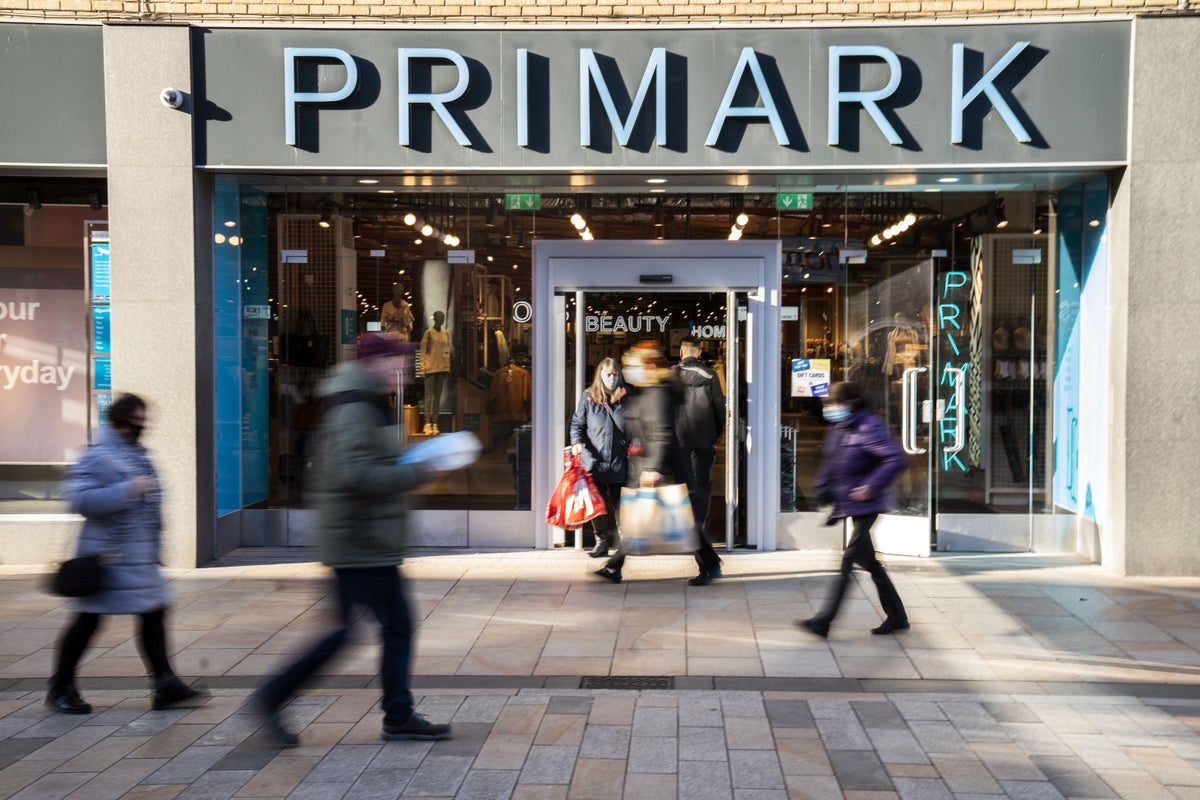
 Business1 week ago
Business1 week agoConsumer caution ahead of Budget drives drop in footfall – BRC
-

 Tech1 week ago
Tech1 week agoSize doesn’t matter: Just a small number of malicious files can corrupt LLMs of any size
-

 Business1 week ago
Business1 week ago‘Need very badly’: Donald Trump announces Arctic cutters deal with Finland; US to buy 11 Icebreakers – The Times of India
-
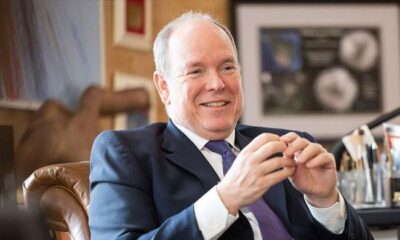
 Entertainment1 week ago
Entertainment1 week agoPrince Albert of Monaco leads the Monaco Explorations in the Aegean Sea
-
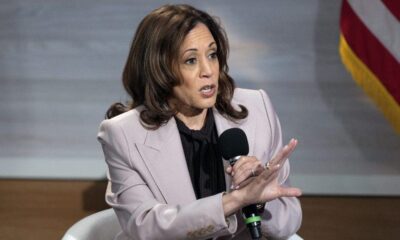
 Sports1 week ago
Sports1 week agoKamala Harris hosts WNBA player to discuss alleged conversation with league commissioner
-

 Business1 week ago
Business1 week agoDelta says premium travel is set to overtake coach cabin sales next year






